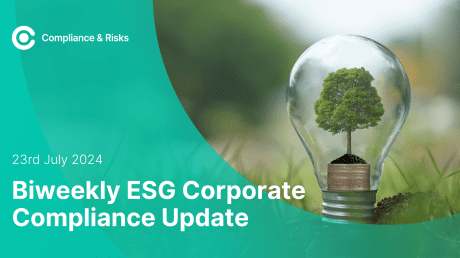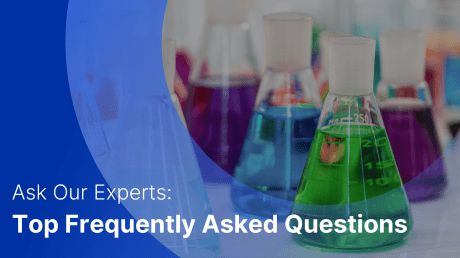
The Weekly Pulse: 13th – 17th February

What’s HOT in our Regulatory World
What are our clients looking at?
This week’s trending sources in C2P
- Oman: Licensing of National Product Identity, Ministerial Decision No. 62, 2023
- Bulgaria: Ordinance on Packaging and Packaging Waste, Decree No. 271/2012 – Amendment – (on making Mobius loop and the Tidyman logo voluntary, etc) Decree No. 419/2022
- USA: Disclosure of a Camera or Recording Capability in Certain Internet-Connected Devices, House Bill 538, 2023
What is our Content Team talking about?
Oman regulates Licensing of National Product Identity – Emilia Assenza
On 9 February 2023, the Omani Ministry of Commerce, Industry, and Investment Promotion issued Decision No. 62/2023 on the licensing of the national product identity, aimed at supporting national production and raising consumer awareness towards Omani products.
According to the decision, it is only allowed to use the national product identity after obtaining the required license. The national product identity is defined as the logo of national products approved by the Ministry and granted to the licensee.
Application for a license must be submitted to the General Directorate of Industry and can be obtained if the conditions set out in Article 3 are satisfied. In particular, the national product logo can only be used for products that achieve a minimum percentage of 20% local content. Article 8 specifies the criteria for calculating such a percentage.
The license is valid for 3 years, subject to renewal.
Sanctions in case of infringements of the provisions of this Decision are also set out and include warnings, an administrative fine not exceeding 500 Omani Rial, suspension of the license for a period not exceeding 1 year, and revocation of the license.
This Decision entered into force on 13 February 2023. To use the national product logo, operators must obtain the license before 13 February 2024 (one year after entry into force).
What are our Knowledge Partners talking about?
Nothing lasts forever: Proposed ban of PFAS in the EU – Cooley
The proposed EU restriction of per-and polyfluoroalkyl substances (“PFAS”, sometimes called “forever chemicals” because they can linger in the human body and environment for a very long time) was published on 7 February 2023. If adopted into law, the restriction will result in a ban on the manufacture, use and placing on the EU market of around 10,000 PFAS, both on their own and in products
This is huge. It is the biggest proposed chemical restriction in EU history and has been several years in the making. If adopted – and we think it will be – the restriction will have a big impact on companies manufacturing electronics, textiles and clothing, cosmetics, food contact materials, packaging and medical devices, amongst others. In many cases this would require a redesign of products destined for the EU market. We also expect the EU’s decision on PFAS to have global consequences, given that other countries frequently follow the EU’s approach to chemicals regulation.
A public consultation will begin on 22 March 2023 and will run for 6 months. Don’t miss the opportunity to provide comments, as these will feed into the restriction process.
Read below for a short summary of the PFAS restriction, our take on why it matters and next steps.
What is it?
The restriction has been prepared within the framework of the EU’s “REACH Regulation” (blogged about here). It was prepared together by the Netherlands, Germany, Sweden, Norway and Denmark. It proposes to restrict a group of PFAS under the REACH Regulation.
Who will it apply to?
The restriction, if adopted into law, will apply to manufacturers, users and importers of PFAS on their own, as well as manufacturers and importers of mixtures and products that contain PFAS.
With certain exceptions, the PFAS covered by the restriction are defined as: “any substance that contains at least one fully fluorinated methyl (CF3-) or methylene (-CF2-) carbon atom (without any H/Cl/Br/I attached to it)”.
These PFAS are currently widely used in electronics, textiles and clothing, cosmetics, food contact materials, packaging and medical devices, amongst others. Companies operating in all of these sectors will likely be impacted.
Why does it matter?
Based on the restriction dossier, if approved, this would likely cover around 10,000 PFAS substances. This is groundbreaking, since it is the biggest REACH restriction ever proposed in the EU. It will have a big impact on products manufacturers in multiple sectors.
- The manufacture, use and placing on the market of PFAS on their own; and
- The placing on the market of PFAS as constituents in other substances, in mixtures and in products
unless the specific concentration limits are complied with or if any of the (very narrow) proposed derogations apply. Only PFAS used as active substances in pesticides, biocides and human and veterinary medicinal products are excluded from the restriction proposal.
We think that the Member States and the European Commission are likely to broadly support the proposed restriction, since it is in line with the Commission’s Chemicals Strategy for Sustainability, which encourages the restriction of substances used in consumer products as a group (rather than individually), and the REACH Restrictions Roadmap (blogged on here).
This restriction is the most recent (and biggest) of numerous initiatives to address PFAS. Internationally, PFAS such as PFOA, PFOS and PFHxS are already regulated under the Stockholm Convention on Persistent Organic Pollutants. In the EU, certain PFAS have already been restricted or are being restricted and have been identified as substances of very high concern (“SVHCs”) under the REACH Regulation. Releases of PFAS into the environment are also being addressed under sector-specific EU legislation regulating industrial emissions, water and drinking water.
On the other side of the Atlantic, State legislatures are increasingly introducing legislation regulating the use of intentionally added PFAS in consumer products, such as textiles and food packaging. For example, in September 2022, California adopted a law prohibiting the manufacture, distribution or sale of any new textile articles and cosmetic products containing PFAS above specific concentrations.
What’s next?
Before becoming law, the dossier needs to be approved by the European Chemicals Agency (“ECHA”) committees and endorsed by the Commission and EU Member States’ representatives. We anticipate that the whole process is likely to take 3-4 years.
- Public consultation. The restriction will now subject to a 6-month public consultation period, which will run from 22 March 2023 to 22 September 2023. All stakeholders are invited to submit comments, which will be taken into account by ECHA’s Committees. Please contact a member of the Cooley team if you would like assistance with putting forward constructive input.
- ECHA committee opinions. After the public consultation, ECHA’s Committees for Risk Assessment and for Socio-Economic Analysis will adopt their opinions (this takes 9-12 months from publication of the restriction, but is likely to take longer here given the size of the restriction).
- Commission proposal. Based on the ECHA committee opinions, the Commission will then present a legislative proposal to amend REACH to restrict PFAS (within 3 months from the receipt of the opinions). For the restriction to be adopted, the REACH Committee, composed of Member States’ REACH Competent Authorities, will have to approve the restriction.
- Non opposition from Council and Parliament. If approved in the REACH Committee, the restriction proposal will then be sent to the European Parliament and Council for the 3-month scrutiny period. If they do not oppose, the restriction will be adopted and published in the Official Journal.
- 18-month transition period. The restriction provides for a relatively short lead in time as it would become enforceable 18 months after the entry into force of the restriction.
Where can I find out more?
The restriction and accompanying documents can be found here.
What are our clients asking about?
“Is the scope of this regulation applicable to products that contain lights and lamps as well as lights / lamps themselves?”
Answer by Michelle Walsh
This draft proposes stricter minimum luminous efficacy requirements for light sources, including a light source in a containing product placed on the GB market. The requirements are proposed to be introduced in 2 stages:
- Stage 1 – from 15 November 2023 to 31 August 2027 – light sources to have a minimum luminous efficacy of 120 lm/W;
- Stage 2 (from 1 September 2027) light sources to have a minimum luminous efficacy of 140 lm/W.
This would mean deleting the Ponmax equation which is currently used in the existing ecodesign regulations in order to lower the MEPS requirements.
Containing product” is defined in regulation 2 of S.I. 2021/1095 as follows: “a product containing—
- one or more light sources; or
- separate control gears; or
- both of the above,
and includes luminaires that can be taken apart to allow separate verification of the contained light source, household appliances containing light sources, and furniture containing light sources (for example display cabinets).”
Stay Updated On Global Regulations With The Weekly Pulse
This information is based on the most viewed regulations on C2P this month.
Sign up to get the latest compliance news delivered to your inbox weekly, for free!
The Pulse – Weekly Newsletter
Get the latest compliance news delivered straight to your inbox








